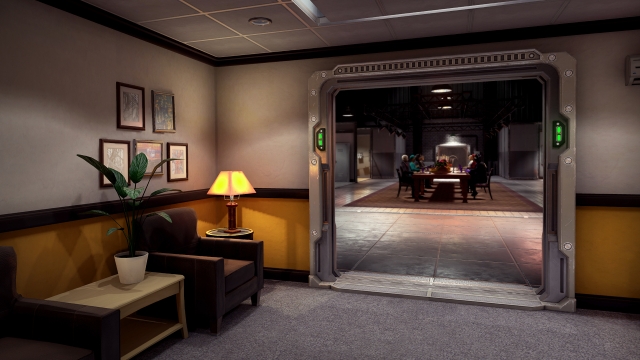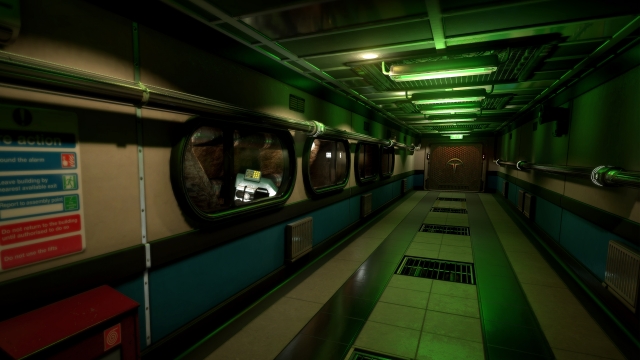The Assembly Preview
Currently, a lot of VR games are rather basic: proof of concept tech demos and experiences that are pretty standard for a new technology just starting out. nDreams are looking to break out of this trend with their new game The Assembly, a narrative puzzle game built for VR. To find out what the game is about, I travelled to nDreams studio to play through the first chapters.
The Assembly is chapter-based, featuring two protagonists seeing the same establishment - the titular Assembly - from two different perspectives. The Assembly is an above the law, morally ambiguous organisation that is a haven for the best and brightest scientists, doctors and engineers to advance science without interference from governments. The first protagonist we meet is Dr. Madeleine Stone, a neuroscientist who has had to make a difficult decision in the recent past, as she is recruited - see “kidnapped” - by The Assembly. The second is Caleb Pearson, a virologist who has been working at The Assembly for some time, and is aware of its more problematic practices.
You flip-flop between the two characters from chapter to chapter, building up the world with detailed level design. It’s very clear that this is a game designed to be explored with a VR headset, with background storytelling that you can get up close and personal with. This was something I spoke to Martin Field and Matt Simmonds, the Art Manager and Senior Audio Manager respectively, about, asking them what it took to create a world that works well in VR. They both spoke of how different it is to normal game design, because players can - and will - look at everything and anything.

The Dinner Party is waiting for you
Simmonds also described how sound needs to be completely different for The Assembly because the normal audio tricks won’t cut it. nDreams are using binaural audio to trick players brains into thinking they are truly in a scientific lab in a bunker in North America, bringing attention directly to objects across the virtual rooms as if they were real. This was perfectly demonstrated in game: when a telephone rang in-game I immediately looked directly where it was, literally as if one was ringing in the room.
Both men cited The Andromeda Strain, the 1971 Robert Wise film, as a thematic influence, and it’s clear to see that inspiration throughout The Assembly, particularly in Caleb’s chapters where you have free movement through the facility. These corridors, offices and labs feel so realistic, and it’s clear that nDreams research into what it feels like to be in a subterranean bunker has really paid off. Field told me that The Assembly’s story hits harder in a realistic environment, so they needed to make things look and feel like they could exist in the real world.
One of the biggest things that nDreams have had to work on is the movement; something that is clear from all the tech demos is people get motion sick very easily whilst wearing VR headsets. In The Assembly, there are two movement settings with lots of different variations to find the one that is right for the individual player. The one they suggested we use was the Blink movement style: in this, you selected a place to move to in the world, using a shadow of your character model to select your destination and then zooming there. They literally achieve this effect by making the player move speed incredibly high for brief sections, and this tricks the player into thinking they’ve moved the distance.

Just in case you'd forgotten you were underground
They have also changed how the camera is controlled to better fit the VR environment: because the player is able to look around without needing the right analogue stick but only to a certain extent, nDreams have mapped a snapping turn there instead. This allows the player to quickly turn to look at something without actually physically turning, a must for use with an Oculus.
There is, for the more VR-experienced among us, a free walk mode which functions similar to standard FPS controls, though the turning controls can be customised from free-look to snap-look and a few in between. I personally found that free walk with the snap-look allowed me to move around very freely and I didn’t feel motion sick, despite playing for about an hour straight like this. Obviously, that’s just me and your mileage may vary.
Talking to the developers, and playing the game, surprised me: this was a game built from the ground-up for VR, but one that really doesn’t feel like it. It doesn’t feel like a gimmick, it feels like a highly fleshed out world that I will happily spend hours in. Even the puzzles, which are mechanics I’ve played with a million times before, feel fresh in VR, and as a puzzle game enthusiast I’m looking forward to what is yet to come. The Assembly releases for HTC Vive and Oculus Rift - and with flatscreen support - on the 19th of July, and on Sony PSVR later this year.









COMMENTS